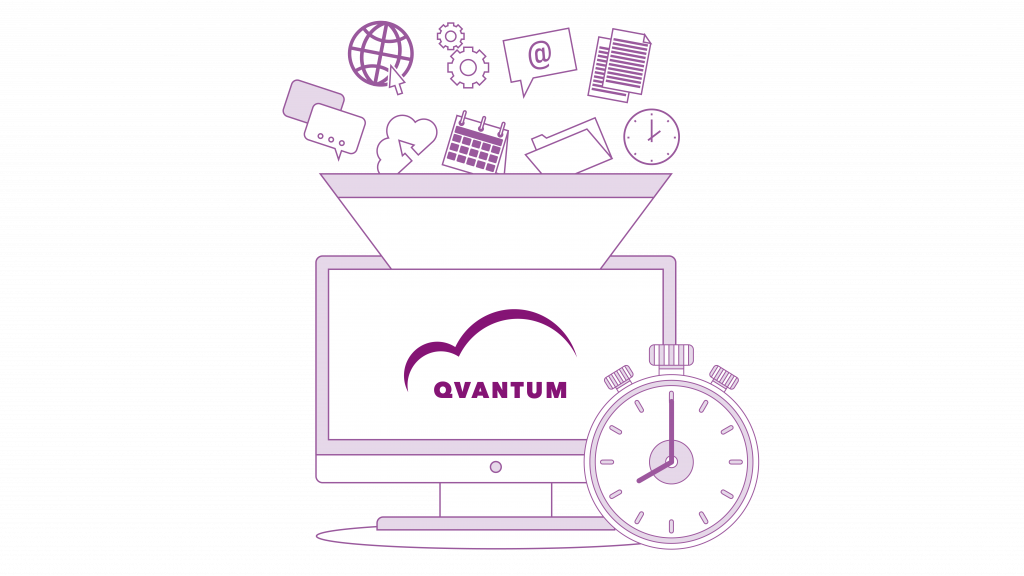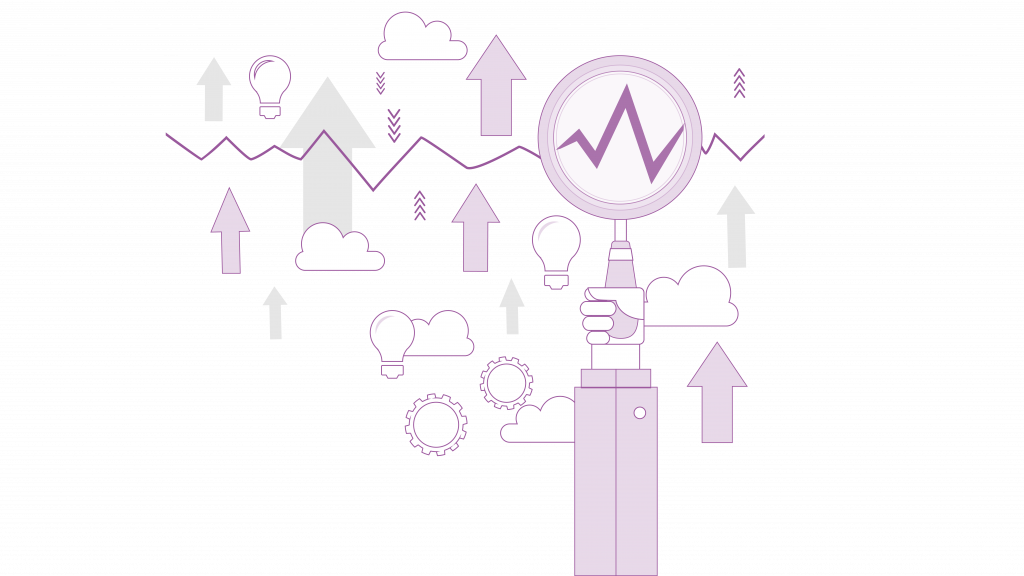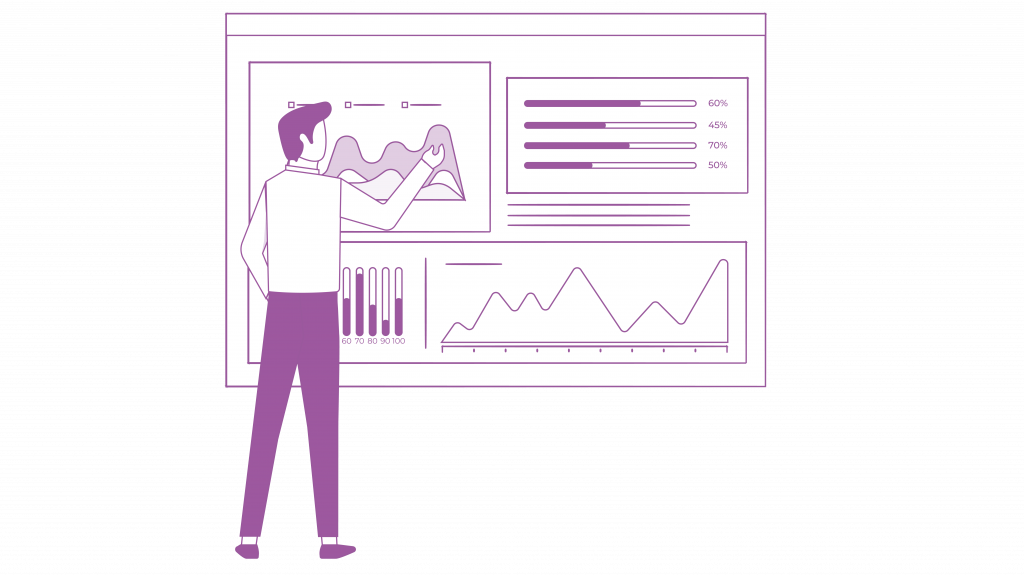10 reasons for planning software in controlling
Why not continue planning with Excel only? One look at current developments is enough to see that previous corporate planning has reached its limits in terms of time, user acceptance, transparency and complexity. In cooperation with the ICV, we present 10 reasons why Planning Software will revolutionize controlling.
1. Maximum flexibility
Whether you plan with Excel or in cloud software, the requirements are the same. All you need is a browser and Internet access. Software providers such as QVANTUM allow you to implement your planning software in the ongoing process. This requires neither costly in-house IT operations, nor extensive training or special qualifications for the planners. The already existing Excel knowledge is sufficient to immediately plan independently in the software.
Do you need to make significant changes to master data? Instead of individual tables, you just adjust your planning in a single place and you’re done. New users and planning models can also be added at any time.
2. Planing in time
Companies that use planning software in controlling talk about a reduction in planning time from one and a half months to about 5 days.
How does this work? Data is collected in the cloud and aggregated automatically. As a result, you gain valuable time that previously had to be spent on the tedious collection and aggregation of planning data. Even better: errors and far more time-consuming manual corrections are avoided and your figures are always up-to-date. So nothing stands in the way of short-term updates and analyses.

3. Mastering growing complexity
The larger and more decentralized companies become, the more elaborate and complex planning becomes. The VUCA world holds new surprises in store at an ever faster pace. Software providers are therefore working with integrated AI systems that take on diverse scenario calculations and deliver reliable forecasts. Through automatic calculations, meaningful data information can be played out in the shortest possible time to assess short-term developments and correlations and make effective decisions.
4. Respond with agility to the fastest developments
Until now, our goals and actions have depended on the speed and feasibility of our planning. This is changing now: By using planning software, our calculations once again serve as a means toward an end. The result is a lean, fast process that ensures up-to-date and transparent figures, makes ad hoc planning possible and thus creates a solid basis for planning and decision-making.

5. Uncomplicated collaboration
You want to avoid time and mistakes, but don’t want to have to undergo new training to gather your planning numbers. Here’s what the cloud’s solution does: Sending data back and forth via email and manual checking by the person responsible for planning is no longer necessary, because you can find all the information relevant to you immediately at a glance in the cloud.
Partial planning is assigned to the responsible persons directly via the software. The assignment takes place in the form of an invitation. The planners receive automatic e-mail notifications in which the completion deadlines are communicated. If they accept the invitation, they are immediately given access to the relevant forms in which they can plan.
In this way, cross-departmental and cross-country planning also becomes increasingly easier.
6. Continue to use Excel
Our controlling platform QVANTUM offers a user interface that is strongly based on Microsoft Excel. We develop the software and GUI design based on current usability best practices.
So you and your team can continue to take advantage of Excel. You can continue to feed Excel spreadsheets. On the other hand, the planning result is made available to you in the form of an Excel report.
A major difference to working with Excel is that your data in the cloud is calculated automatically and in only one place. So when changes are made, all planners always see the same planning status.
7. Optimize sales operation alignment
No one can afford to waste resources or have angry customers waiting for their goods. At the same time, you don’t want to watch your competitors pass you by.
How does scheduling software help you with this problem? The platform ensures that you don’t lag behind with your information and planning, and that demand and production are better balanced. The consequences: More effective production processes, a more stable delivery capability and happy customer relationships.
How is this possible?
When planning with software, you record your planning data from Sales and Operations directly in the cloud and merge them into the planning model of your choice with just one click.
Thanks to the clear data situation in the cloud, you are able to adjust your sales planning more quickly in order to react quickly to new developments. Based on the updated sales planning, you can optimize the manufacturing process. Production data, in turn, provides information about necessary sales measures. The rapid exchange enables a real-time reaction to current developments and supports the balance of demand and production.

8. Control and evaluation
While you have to keep track of your colleagues when working only with Excel, the cloud software shows you the status, progress and time span of all assigned planning units that your colleagues are working on. This allows you to easily control your planning process. It is also possible to pause your calculations at any time or end them in advance.
Shorter planning cycles: You can perform a target/actual comparison at any time to support and control your decisions. Since you always have all live data at hand, you are able to generate short-term reports in case of new developments. Regular reports in turn provide clarity: Are we still on target? Where are there deviations? What measures can we take to keep to the plan?
9. Reliable data basis
As the 2022 trends in controlling show, decisions are increasingly based on data.
Agile business planning creates the conditions for data-driven planning by always providing consistent and up-to-date data. The integration of all essential planning components and their inclusion in scenario calculations is a snap in the cloud. The completeness and access security of your data ensures high data quality, on which your operational planning is based.

10. Access, security and data control
The fact that using planning software in controlling saves time and helps you make quick strategic decisions may be one thing. However, the fact that you no longer have to send confidential data back and forth, which can get lost along the way and be viewed by unauthorized third parties, seems to us to be even more important. From now on, all your planning data is secured, encrypted and logged in the cloud. To ensure the data protection of different cloud customers, you get your own authentication system based on Open ID Connect/OAuth 2 and your own database for managing your planning projects.
Good planning software also has effective systems to protect against cyber attacks as well as transparent data protection measures. Hosting in your own, preferably German, data center ensures maximum security for your highly vulnerable company data with professional and certified security measures!
Conclusion:
The planning software helps you to make your controlling faster, more secure and more user-friendly. Even in VUCA times. And especially for large decentralized companies that operate internationally.
The user interface is mostly based on Microsoft Excel, which means you can continue to use the advantages of Excel in the cloud software. Yet the disadvantages of Excel no longer stand in your way. Because what Excel can’t do, the cloud does even more comprehensively and effectively.
QVANTUM has developed a planning software that fulfills all of our 10 mentioned features, so you can plan and act worry-free.
